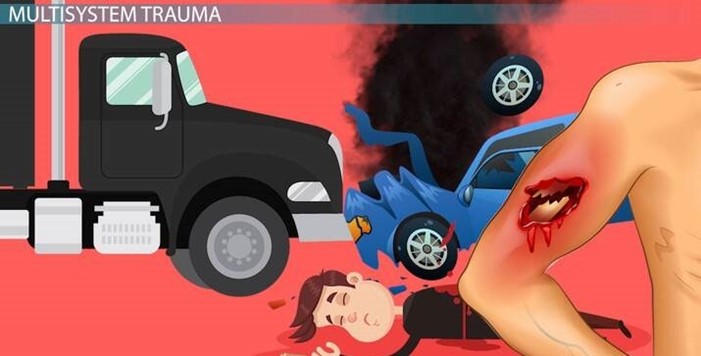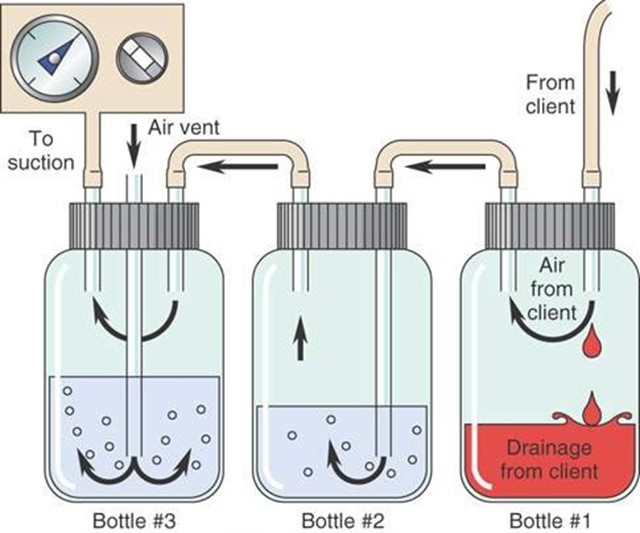A nurse in an emergency department is preparing to care for a client who is being brought in with multiple system trauma following a motor vehicle crash. Which of the following should the nurse identify as the priority focus of care?
Preventing musculoskeletal disability
Airway protection
Stabilizing cardiac arrhythmias
Decreasing intracranial pressure
The Correct Answer is B
Choice A Reason: Preventing musculoskeletal disability is important, but not the priority focus of care. The nurse should first assess and manage the client's life-threatening injuries, such as airway obstruction, bleeding, shock, or brain injury.
Choice B Reason: Airway protection is the priority focus of care for a client with multiple system trauma. The nurse should ensure that the client has a patent airway and adequate ventilation, as any compromise in these areas can quickly lead to hypoxia, respiratory failure, and death.
Choice C Reason: Stabilizing cardiac arrhythmias is also important, but not the priority focus of care. The nurse should monitor the client's cardiac rhythm and treat any arrhythmias that may occur, but only after securing the airway and breathing.
Choice D Reason: Decreasing intracranial pressure is another important goal, but not the priority focus of care. The nurse should assess the client's neurological status and intervene to prevent or reduce increased intracranial pressure, such as elevating the head of the bed, maintaining normothermia, and administering osmotic diuretics. However, these measures are secondary to ensuring adequate oxygenation and perfusion.

Nursing Test Bank
Naxlex Comprehensive Predictor Exams
Related Questions
Correct Answer is D
Explanation
Choice A Reason: This choice is incorrect because warm, flushed skin is not a sign of respiratory acidosis. Warm, flushed skin may indicate fever, infection, inflammation, or allergic reaction, but it does not reflect the acid-base imbalance in the blood.
Choice B Reason: This choice is incorrect because hyperactive deep tendon reflexes are not a sign of respiratory acidosis. Hyperactive deep tendon reflexes may indicate hypocalcemia, hyperthyroidism, or spinal cord injury, but they do not reflect the carbon dioxide level in the blood.
Choice C Reason: This choice is incorrect because bounding peripheral pulses are not a sign of respiratory acidosis. Bounding peripheral pulses may indicate increased cardiac output, anxiety, or hyperthyroidism, but they do not reflect the pH level in the blood.
Choice D Reason: This choice is correct because widened QRS complexes are a sign of respiratory acidosis. QRS complexes are the segments on an electrocardiogram (ECG) that represent the depolarization of the ventricles. A normal QRS complex duration is 0.06 to 0.10 seconds, and a widened QRS complex duration is more than 0.12 seconds. A widened QRS complex may indicate hyperkalemia, which is a common complication of kidney failure and respiratory acidosis. Hyperkalemia is a condition in which the serum potassium level is higher than normal (more than 5 mEq/L). It may cause cardiac arrhythmias, muscle weakness, or paralysis.
Correct Answer is A
Explanation
Choice A Reason: Continuous bubbling in the water-seal chamber indicates an air leak in the chest tube system, which can compromise the drainage of air and fluid from the pleural space and impair lung expansion.
Choice B Reason: Occasional bubbling in the water-seal chamber is normal and expected, as it indicates that air is being removed from the pleural space.
Choice C Reason: Fluctuations in the fluid level in the water-seal chamber are normal and expected, as they reflect changes in intrathoracic pressure during inspiration and expiration.
Choice D Reason: Constant bubbling in the suction-control chamber is normal and expected, as it indicates that suction is being applied to the chest tube system.

Whether you are a student looking to ace your exams or a practicing nurse seeking to enhance your expertise , our nursing education contents will empower you with the confidence and competence to make a difference in the lives of patients and become a respected leader in the healthcare field.
Visit Naxlex, invest in your future and unlock endless possibilities with our unparalleled nursing education contents today
Report Wrong Answer on the Current Question
Do you disagree with the answer? If yes, what is your expected answer? Explain.
Kindly be descriptive with the issue you are facing.
